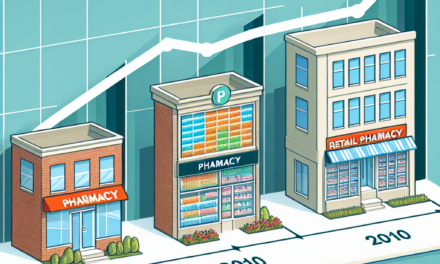GOP Lawmakers Call on CMMI to Prioritize Cost Efficiency and Transparency
The Center for Medicare and Medicaid Innovation (CMMI) has been a focal point in the ongoing debate about healthcare reform in the United States. As the GOP lawmakers push for reforms, they are increasingly calling on CMMI to prioritize cost efficiency and transparency in its operations. This article delves into the implications of these calls, exploring the current landscape of healthcare costs, the role of CMMI, and the potential impact of increased transparency and efficiency on the healthcare system.
Understanding CMMI: Its Role and Objectives
The Center for Medicare and Medicaid Innovation (CMMI) was established under the Affordable Care Act (ACA) in 2010 with the primary goal of testing new payment and service delivery models to improve the quality of care while reducing costs. CMMI aims to transform the healthcare system by promoting value-based care, which focuses on patient outcomes rather than the volume of services provided.
Since its inception, CMMI has launched numerous initiatives, including Accountable Care Organizations (ACOs), bundled payment models, and the Comprehensive Primary Care Plus (CPC+) program. These initiatives are designed to incentivize healthcare providers to deliver high-quality care while managing costs effectively.
However, the effectiveness of CMMI’s initiatives has been a subject of debate. Critics argue that while the agency has made strides in promoting value-based care, it has not done enough to ensure cost efficiency and transparency. This has led to calls from GOP lawmakers for CMMI to prioritize these aspects in its future initiatives.
The Current State of Healthcare Costs in the U.S.
Healthcare costs in the United States have been rising at an alarming rate, outpacing inflation and wage growth. According to the Centers for Medicare & Medicaid Services (CMS), national health expenditures reached $4.1 trillion in 2020, accounting for 19.7% of the GDP. This trend raises significant concerns about the sustainability of the healthcare system and the financial burden on American families.
Several factors contribute to the rising costs of healthcare, including:
- Administrative Costs: The U.S. healthcare system is characterized by complex billing and administrative processes, which contribute significantly to overall costs.
- Pharmaceutical Prices: The high cost of prescription drugs is a major driver of healthcare expenses, with Americans paying more for medications than citizens of other countries.
- Chronic Diseases: The prevalence of chronic diseases such as diabetes and heart disease necessitates ongoing medical care, driving up costs.
- Technological Advancements: While innovations in medical technology can improve patient outcomes, they often come with high price tags.
As healthcare costs continue to rise, the need for cost efficiency becomes increasingly urgent. GOP lawmakers argue that CMMI must take a more proactive approach to address these issues by implementing models that prioritize cost-effective care delivery.
The GOP’s Vision for Cost Efficiency in Healthcare
GOP lawmakers have long advocated for reforms aimed at reducing healthcare costs while maintaining quality. Their vision for cost efficiency in healthcare encompasses several key principles:
- Market Competition: Encouraging competition among healthcare providers can lead to lower prices and improved quality of care. GOP lawmakers believe that CMMI should promote models that foster competition.
- Value-Based Care: Transitioning from fee-for-service models to value-based care is essential for controlling costs. This approach incentivizes providers to focus on patient outcomes rather than the volume of services rendered.
- Transparency in Pricing: Providing patients with clear information about the costs of services can empower them to make informed decisions about their care, ultimately driving down costs.
- Reducing Regulatory Burdens: Streamlining regulations can help reduce administrative costs and allow healthcare providers to focus more on patient care.
To support these principles, GOP lawmakers have proposed various legislative measures aimed at enhancing CMMI’s focus on cost efficiency. For instance, they have called for the implementation of payment models that reward providers for delivering high-quality care at lower costs.
The Importance of Transparency in Healthcare
Transparency in healthcare is a critical component of cost efficiency. When patients have access to clear and comprehensive information about the costs and quality of care, they can make better-informed decisions. This not only empowers patients but also encourages providers to compete on price and quality.
Several studies have shown that increased transparency can lead to lower healthcare costs. For example, a study published in the Journal of the American Medical Association found that when patients were provided with price information for elective surgeries, they were more likely to choose lower-cost providers, resulting in significant savings.
Moreover, transparency can help identify inefficiencies within the healthcare system. By making data on healthcare costs and outcomes publicly available, CMMI can facilitate comparisons among providers and highlight areas where improvements are needed. This can lead to the identification of best practices and the dissemination of effective care models.
However, achieving transparency in healthcare is not without its challenges. Some providers may be resistant to disclosing pricing information due to concerns about competitive disadvantage. Additionally, the complexity of healthcare pricing can make it difficult for patients to understand the true cost of care.
To address these challenges, GOP lawmakers are advocating for policies that require CMMI to prioritize transparency in its initiatives. This includes mandating that providers disclose prices for services and making quality metrics publicly available.
Case Studies: Successful Models of Cost Efficiency and Transparency
Several healthcare systems and organizations have successfully implemented models that prioritize cost efficiency and transparency. These case studies provide valuable insights into how CMMI can adopt similar approaches to improve the overall healthcare landscape.
1. Geisinger Health System
Geisinger Health System, based in Pennsylvania, is often cited as a model for cost-effective and transparent healthcare delivery. The organization has implemented a program called “ProvenCare,” which offers a bundled payment model for specific procedures, such as heart surgery. Under this model, patients pay a single price that covers all aspects of their care, including pre-operative assessments, the surgery itself, and post-operative follow-up.
This approach has led to significant cost savings for both patients and the healthcare system. Geisinger reports that its ProvenCare program has reduced complications and readmissions, resulting in better patient outcomes and lower overall costs. Additionally, the organization provides patients with clear information about the costs associated with their care, enhancing transparency.
2. Virginia Mason Medical Center
Virginia Mason Medical Center in Seattle, Washington, has adopted a unique approach to healthcare delivery known as the “Virginia Mason Production System.” This model focuses on eliminating waste and improving efficiency through lean management principles.
By streamlining processes and reducing unnecessary steps in patient care, Virginia Mason has been able to lower costs while maintaining high-quality care. The organization also emphasizes transparency by providing patients with detailed information about treatment options and associated costs. This has empowered patients to make informed decisions about their care, ultimately leading to better outcomes.
3. Intermountain Healthcare
Intermountain Healthcare, based in Utah, is another example of a healthcare system that has successfully prioritized cost efficiency and transparency. Intermountain has implemented a value-based care model that focuses on improving patient outcomes while controlling costs.
The organization uses data analytics to identify best practices and standardize care across its network of providers. By sharing this information with patients, Intermountain promotes transparency and encourages patients to engage in their care. The result has been a significant reduction in healthcare costs without compromising quality.
Conclusion: The Path Forward for CMMI
The calls from GOP lawmakers for CMMI to prioritize cost efficiency and transparency reflect a growing recognition of the need for reform in the U.S. healthcare system. As healthcare costs continue to rise, it is imperative that CMMI adopts models that promote value-based care, enhance transparency, and empower patients to make informed decisions.
By learning from successful case studies and implementing policies that prioritize these principles, CMMI can play a crucial role in transforming the healthcare landscape. The potential benefits of increased cost efficiency and transparency are significant, not only for patients but for the healthcare system as a whole.
In summary, the future of healthcare in the United States hinges on the ability of organizations like CMMI to adapt and innovate. By embracing the calls for cost efficiency and transparency, CMMI can help create a more sustainable and effective healthcare system that serves the needs of all Americans.





